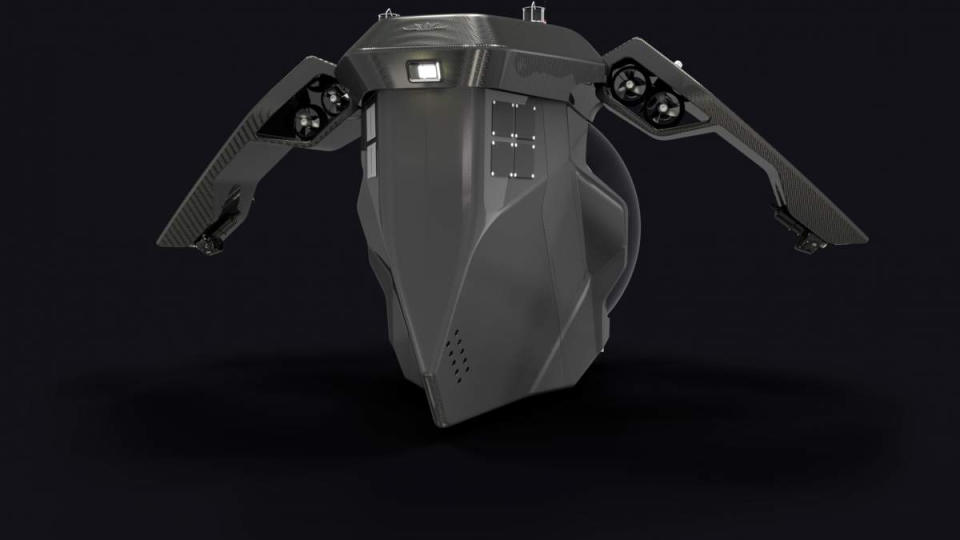A Billionaire Is Diving to the ‘Titanic’ in a New Triton Sub to Prove Deep-Sea Trips Can Be Safe

OceanGate’s Titan tragic implosion a year ago put a collective pause on deep-sea dives to the RMS Titanic, but one Ohio billionaire is ready to try again.
Real estate mogul and intrepid explorer Larry Connor plans to dive 12,500 feet to the remains of the world’s most famous cruise ship to help re-establish confidence in deep-sea expeditions in the wake of the OceanGate disaster.
More from Robb Report
A Gold Pocket Watch Recovered From the 'Titanic' Just Sold for a Record $1.5 Million
The 'Titanic' Meets Queen Elizabeth Inside This Elaborate Florida Estate
The 'Titanic' Door That Could've Saved Jack Just Fetched $718,750 at Auction
The 74-year-old contacted Triton Submarines co-founder Patrick Lahey shortly after the Titan sub imploded last June to see if he could build a sub capable of reaching the shipwreck safely and repeatedly, according to The Wall Street Journal. (Lahey rightly predicted last year that the OceanGate tragedy would spur more investment in deep-ocean submersibles not less.)

The resulting sub, which Connor christened The Explorer—Return to the Titanic, takes design cues from the Triton 4000/2 Abyssal Explorer. That 15-foot vessel features a hydrodynamic silhouette, an acrylic hull, and 10-foot folding wings, which allow it to reach depths of 13,000 feet, Triton says. “The journey takes less than two hours, significantly faster than previously possible,” the U.S. outfit adds.
Connor’s custom successor, which should be designed by the summer of 2026, will reportedly be the first acrylic-hulled sub to reach such depths. The vessel, expected to cost millions, will be fitted with lights and cameras for close-range filming and scientific observation. In addition, the huge acrylic sphere will give the two seafarers an unobstructed, 360-degree view of the underwater world. “Frankly, the technology didn’t exist even six or eight years ago,” Connor said in an interview on Tuesday. “It’s only been with recent developments in the last five years that you could build this.”

Connor and Lahey will explore the wreck site, which is located in the Atlantic Ocean about 400 miles from Newfoundland, Canada. “Ours is just not a trip to the Titanic, it’s a research mission,” added Connor. “The other purpose is to demonstrate to people around the globe that you can build a revolutionary, first-of-its-kind sub and dive it safely and successfully to great depths.”
Titan’s implosion was the first catastrophic disaster of a submersible in 60 years, but it created a global media frenzy that may have instilled a fear of deep-sea diving in members of the public. “I’m concerned that people associate diving subs, especially new or different subs, with danger or tragedy,” Connor explained. The five members aboard Titan were most likely killed instantly on June 18 at a depth of about 3,500 meters (11,482 feet). The tragedy raised wider questions about the sub’s experimental design. Titan was also the only one of about 10 deep-diving submersibles not certified by industry third parties such as the American Bureau of Shipping or DNV.
Conversely, the Abyssal Explorer is commercially certified for dives over 13,000 feet. Connor has also said that he would only embark on the proposed voyage if his sub is fully certified by a marine organization. “If we can’t do it, what we call ‘s and s’—safely and successfully—we’re just not going to do it,” he concluded. There is no timeframe for the planned expedition, but Connor expects The Explorer—Return to the Titanic will take two and a half to three years to build.
Best of Robb Report
Sign up for Robb Report's Newsletter. For the latest news, follow us on Facebook, Twitter, and Instagram.

 Yahoo News
Yahoo News 
